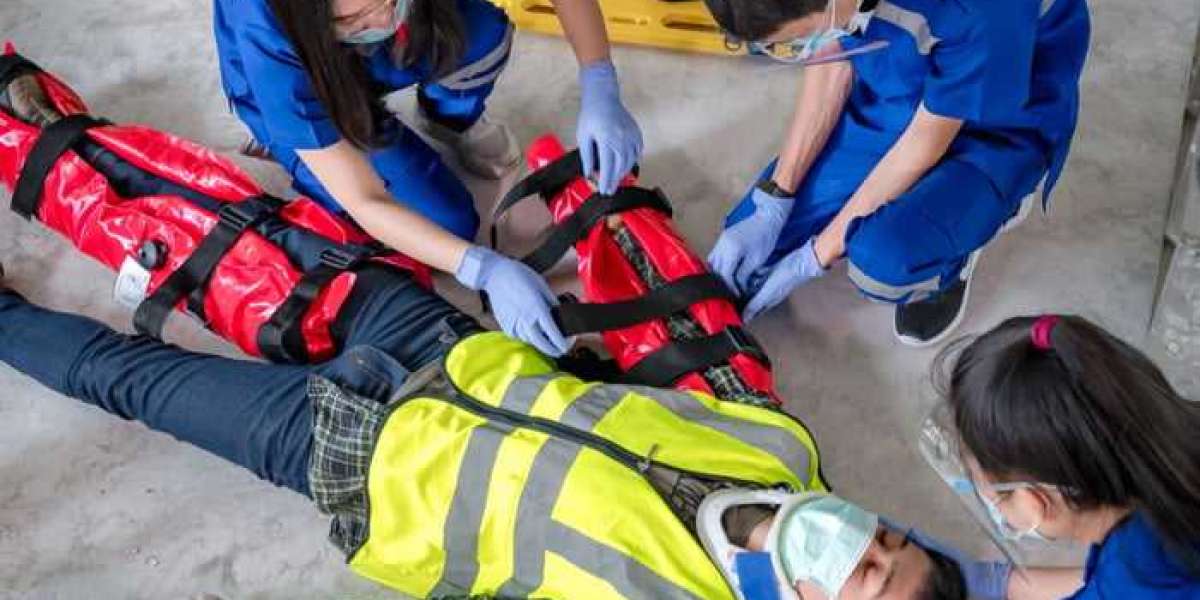Introduction: The Importance of CPR and AED Training
Understanding CPR: Cardiopulmonary Resuscitation
What is CPR?
CPR is a life-saving procedure used when someone's heartbeat or breathing stops. It involves chest compressions and, in some cases, rescue breaths, to help restore oxygen flow to the brain and other vital organs.
How CPR Works
When someone’s heart stops, their brain and organs no longer receive the oxygenated blood they need. CPR keeps blood flowing to the heart and brain, which increases the chances of survival until medical professionals can take over.
Key Steps in Performing CPR
- Step 1: Check for responsiveness. Gently tap the person and shout to see if they respond.
- Step 2: Call for help. Dial emergency services or have someone else do it while you begin CPR.
- Step 3: Chest compressions. Use both hands to press firmly in the center of the chest, aiming for 100-120 compressions per minute.
- Step 4: Rescue breaths. If trained, give mouth-to-mouth breaths to supply oxygen.
Understanding AED: Automated External Defibrillator
What is an AED?
An AED is a portable device that analyzes a person’s heart rhythm and delivers an electric shock if necessary. It is used in cases of sudden cardiac arrest to help restore normal heart rhythm.
How Does an AED Work?
The AED assesses the heart's rhythm, and if it detects a shockable rhythm (such as ventricular fibrillation), it instructs the user to deliver a shock. The shock can help restart the heart’s normal rhythm.
The Role of AED in Saving Lives
AEDs are critical in cases of cardiac arrest. With every minute that passes without defibrillation, the chances of survival decrease by 10%. AEDs are easy to use, with clear voice prompts to guide users through the process.
CPR/AED Training: What to Expect
Overview of CPR/AED Courses
CPR and AED training typically consists of both theoretical learning and hands-on practice. Training can range from basic courses for the general public to more advanced certifications for healthcare providers.
Online vs. In-person Training
While online courses provide convenience, hands-on in-person training ensures you're fully prepared to handle an emergency. In-person courses give you the opportunity to practice CPR and AED techniques with expert instructors.
Certification and Recertification
Most CPR and AED courses offer certification that is valid for two years. After this period, you’ll need to take a recertification course to ensure your skills stay up to date.
FAST Rescue Approach: An Overview
The Concept of FAST Rescue
The FAST Rescue approach is designed to emphasize quick and efficient action during a medical emergency. It focuses on reducing the time between collapse and treatment, ensuring the best chances for survival.
How FAST Rescue Enhances Emergency Response
The faster the response, the higher the likelihood of survival. FAST Rescue prioritizes early CPR and AED use to maintain vital functions and prevent brain damage.
Importance of Timeliness in CPR and AED Use
Every second counts when someone is experiencing cardiac arrest. The FAST Rescue approach encourages individuals to act quickly, reducing delays that can lead to irreversible damage.
Step-by-Step Guide to CPR
Checking for Responsiveness
Before beginning CPR, it’s important to ensure the person is unresponsive. Tap the person, shout, and look for signs of breathing or movement.
Calling for Help
Time is critical. Always call emergency services before starting CPR or ask someone else to do it.
Performing Chest Compressions
Place your hands on the person’s chest and push down hard and fast (about 2 inches deep at a rate of 100-120 compressions per minute).
Rescue Breaths
If trained, give two rescue breaths after every 30 chest compressions. Ensure the person’s airway is open, and make a seal over their mouth with yours.
Step-by-Step Guide to Using an AED
Locating the AED Device
Look for an AED in public places like airports, schools, and shopping malls. If you’re unsure, ask someone nearby.
How to Attach the AED Pads
Peel the adhesive pads from the AED package and place them on the person’s bare chest as indicated by the device.
Analyzing the Heart Rhythm
The AED will automatically analyze the person’s heart rhythm. If a shock is needed, the device will instruct you to deliver one.
Administering a Shock
Press the button on the AED to deliver the shock. Follow the prompts to continue CPR if necessary.
Common Mistakes in CPR and AED Use
Mistakes to Avoid in CPR
- Failing to perform chest compressions at the correct depth or rate.
- Pausing compressions for too long between breaths.
Common Errors with AED Use
- Failing to follow AED instructions carefully.
- Placing pads incorrectly on the person’s chest.
How to Ensure You're Doing It Right
Stay calm, follow the steps methodically, and never hesitate to call for help if unsure. Practice regularly to stay sharp.
Benefits of CPR/AED Training for Individuals
Saving Lives
CPR and AED training can significantly increase someone’s chance of survival in an emergency.
Increasing Confidence in Emergencies
Knowing what to do during a crisis can help reduce anxiety and improve your ability to act quickly.
Peace of Mind for You and Others
Being prepared provides peace of mind, knowing you could potentially save someone’s life in a critical moment.
Benefits of CPR/AED Training for Organizations
Workplace Safety and Preparedness
Employees trained in CPR and AED can make a life-saving difference in the event of a workplace emergency.
Employee Health and Well-being
Training shows employees that their health and safety are a top priority, which can boost morale.
Reducing Liability and Risk
Employers who ensure staff are CPR/AED certified may reduce the risk of legal liability following a medical emergency.
When to Use CPR and AED: Real-Life Scenarios
Cardiac Arrest
CPR and AED are most commonly used during cardiac arrest when the heart stops beating.
Drowning
If a person stops breathing due to drowning, CPR can help restore oxygen flow until medical help arrives.
Choking
In some choking incidents, CPR can be used if the airway is blocked and the person becomes unconscious.
Drug Overdose
Overdose victims can benefit from CPR if they stop breathing and become unresponsive.
Who Should Take CPR and AED Training?
Parents and Caregivers
Parents and caregivers are often the first responders to emergencies involving children and should be trained in CPR and AED.
Healthcare Professionals
Doctors, nurses, and first responders need CPR/AED training to handle medical emergencies effectively.
Teachers, Coaches, and Trainers
Anyone who works with groups of people, especially children, should be trained in CPR and AED.
Employers and Employees
Workplace safety can be improved with CPR/AED training, especially in high-risk environments.
CPR/AED Training for Children and Adolescents
Teaching Kids the Basics of CPR
Teaching children how to call for help and perform basic CPR can empower them to act in emergencies.
Age-Appropriate Training Techniques
Adjust CPR and AED training for children and adolescents based on their age and comprehension level.
Encouraging Lifesaving Skills at a Young Age
Starting CPR training early can create a culture of preparedness and safety.
How to Choose a CPR/AED Training Course
Recognized Training Providers
Look for courses offered by organizations like the American Heart Association or Red Cross.
What to Look for in a Course
Ensure the course includes hands-on practice, certification, and access to expert instructors.
Certification vs. Basic Awareness
Certification courses provide in-depth training, while awareness courses offer a general understanding of CPR and AED.
Conclusion: CPR/AED Training Could Save a Life
CPR and AED training can mean the difference between life and death in an emergency. Whether you're learning for yourself, your family, or your workplace, having the ability to respond effectively is invaluable. Don't wait until it's too late—get trained today and help create a safer, more prepared world.
FAQs
How long does CPR and AED training take?
- Most courses last between 3 to 4 hours, with certification lasting up to two years.
Is AED training difficult?
- No, AED training is simple and intuitive, with clear voice prompts guiding you through the process.
Can CPR and AED be used on children?
- Yes, there are specific techniques for performing CPR and using AEDs on children, and training should cover these differences.
Can I take CPR/AED training online?
- Yes, online courses are available, but hands-on practice is essential for full certification.
What should I do if I’m unsure about using an AED?
- Trust the device's instructions. AEDs are designed to be user-friendly, and they will guide you through each step.








